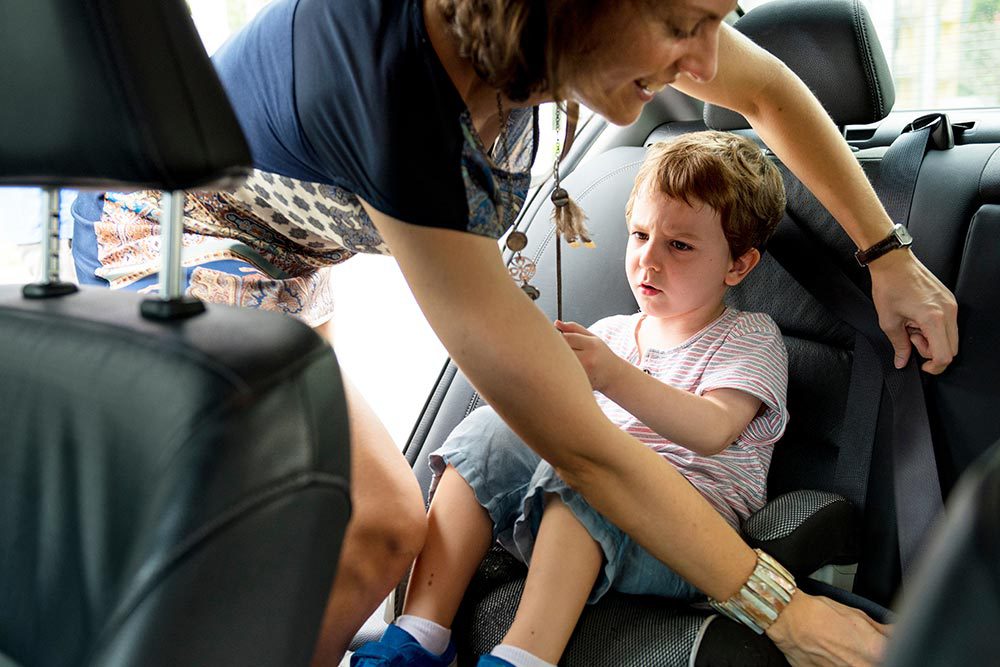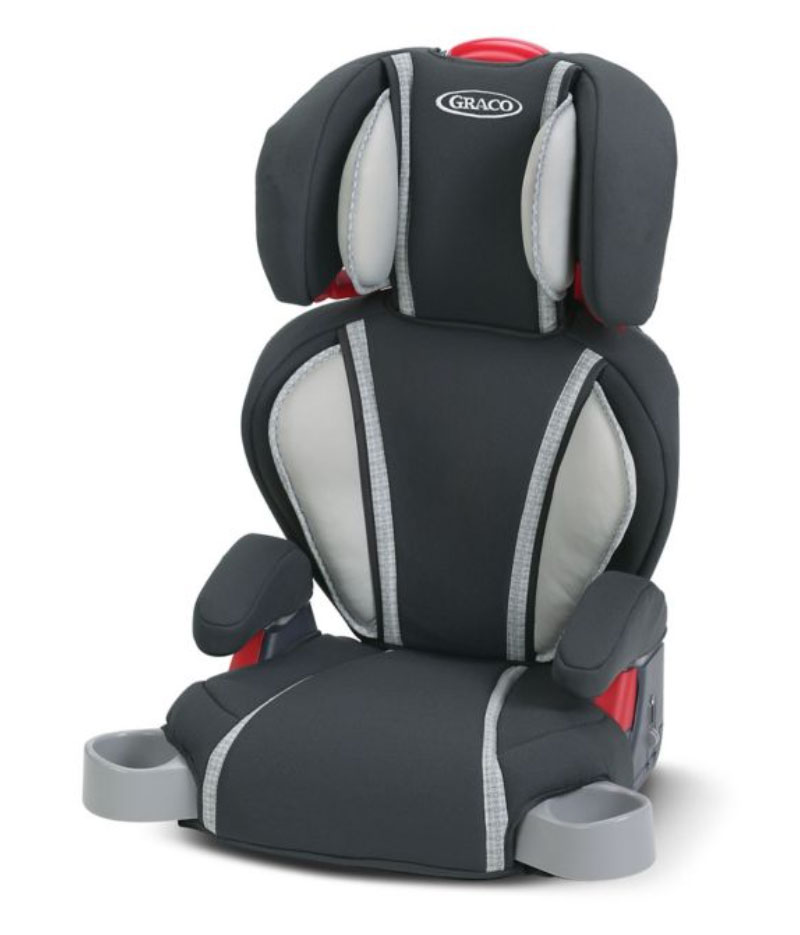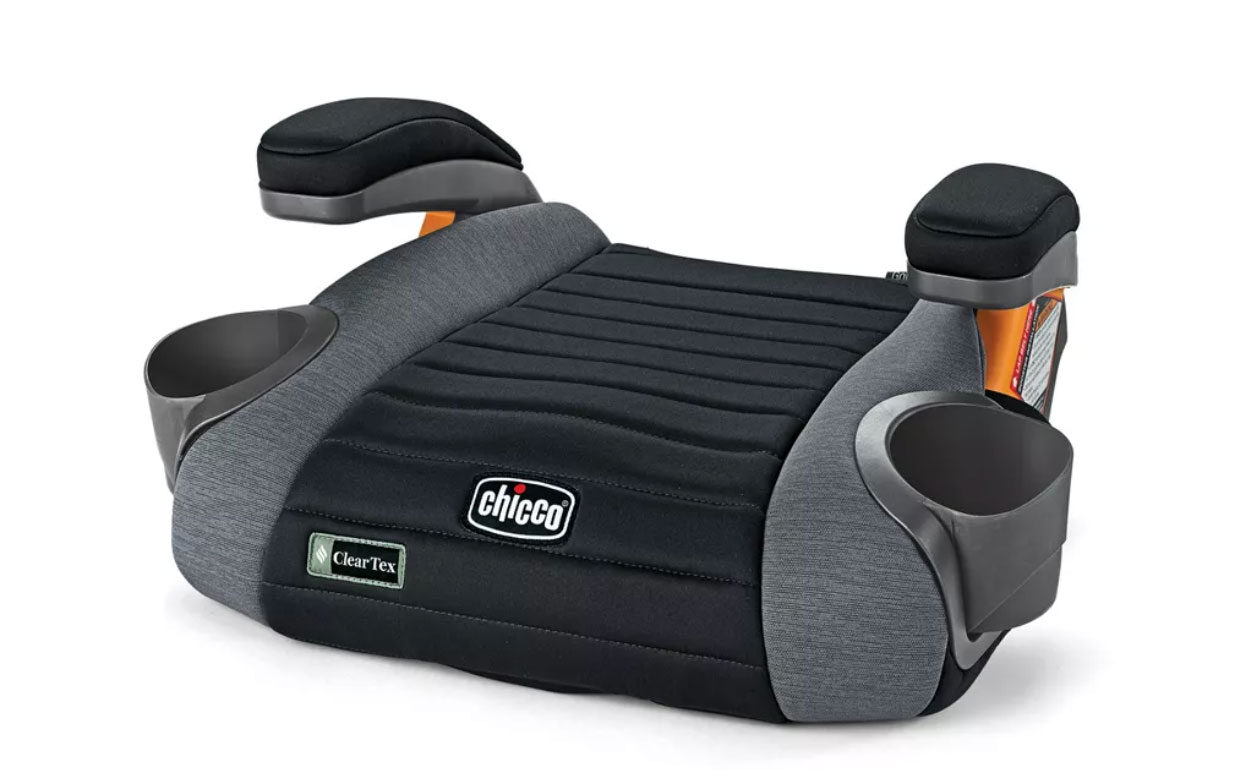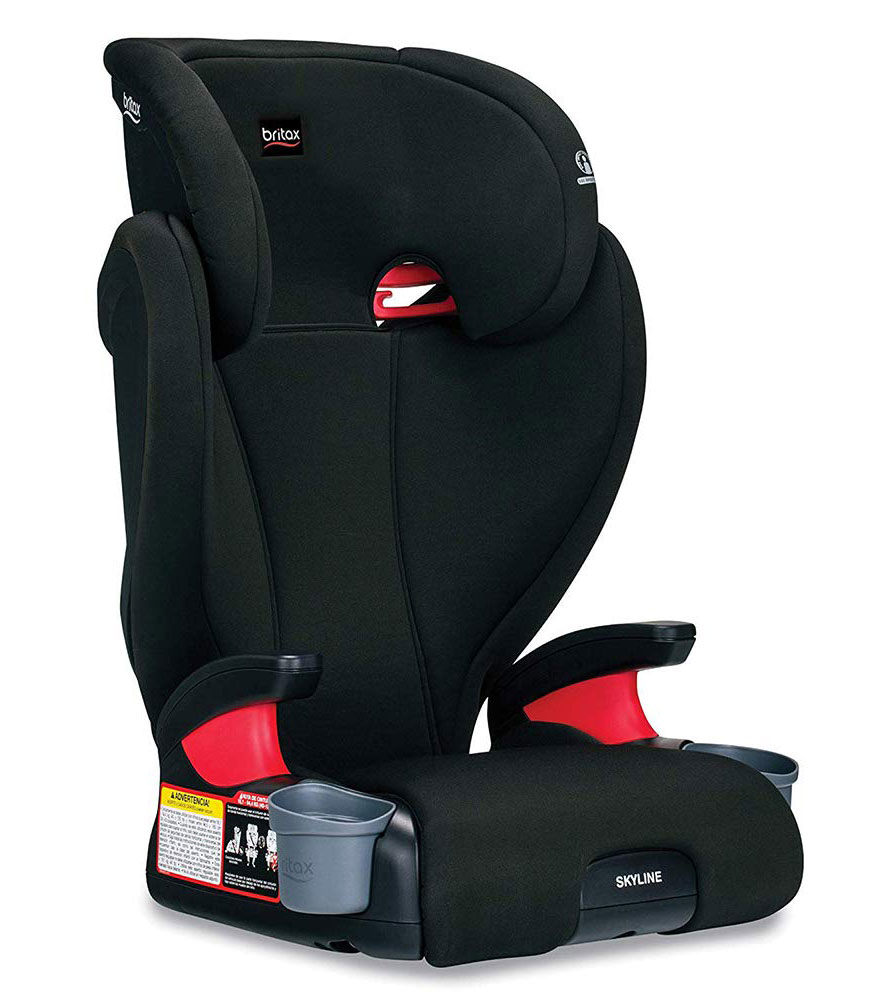Is It Time To Transition Your Child to a Booster Seat?

Your child’s age, height, weight, and how their seat belt fits are all crucial determining factors.
Experts: Lainie Choy, CPST, Safe in the Seat; Derrell Lyles, National Highway Traffic Safety Administration
As parents, we are constantly on high alert with anything involving our kids’ safety—especially when it comes to car seats. I, for one, am incredibly intimidated by these contraptions. I’m constantly questioning if I installed the seat correctly, if the harness is positioned in the right place, if I gave the straps enough slack (or too much), and if this seat is the one that will keep my child the safest. These are just my general daily worries regarding my kids’ car seats, too; I can’t even begin to explain the self-doubt that overcomes me when we reach a point of transition, like from a forward-facing car seat to a booster.
Admittedly, I put way too much pressure on myself, as I tend to imagine the absolute worst possible outcome if I make a single misstep as a parent. But given the millions of car accidents that occur every year in the U.S., I’d argue that my caution with car seat transitions is valid (and necessary).
“We see so many caregivers moving kids to boosters too young and then moving them out of boosters before [the child] fits properly in the seat belt,” Lainie Choy, a certified child passenger safety technician, tells Pregnancy & Newborn, “Both of these mistakes can be catastrophic in the event of a crash.”
If your child is close to transitioning to a booster seat, and Choy’s use of the word “catastrophic” has you feeling all kinds of anxious, I’m right there with you. But if you’re equipped with the right information, you can feel confident in your decision to move your little one to a big kid booster seat—whether it happens today or two years from now.
Differences Between a High-Back Booster Seat and a Backless Booster Seat
If I’m being totally honest, with only minimal safety variances in many of them, I probably couldn’t tell you the difference in a lot of car seat styles without having to do a deep research dive. When it comes to booster seats, though, it’s much easier because it’s most likely either a high-back or backless model.
According to Derrell Lyles, a representative for the National Highway Traffic Safety Administration (NHTSA), the purpose of a booster seat, regardless of the design, is to position a child “so the vehicle’s lap-and-shoulder belt fits properly over the stronger points of a child’s body, the hips and across the chest.”
A high-back booster seat looks very similar to many forward-facing car seats, but the difference is that it uses the vehicle’s seat belt to strap a child in rather than a five-point harness. “We prefer kids start out in the high-back booster,” Choy says, because it’s more supportive than a backless booster. “The high-back booster has head wings that the child can rest their head on, and it serves as a reminder for them to stay in position.” Additionally, these boosters have seat belt guides to help ensure a correct fit. Lyles says high-back boosters are “ideal for vehicles that don’t have headrests or high seat backs.”
The backless booster is the other option. It has a very simple design without back or side support, but many still have some kind of seat belt positioning feature. Again, Choy recommends parents opt for a high-back booster for their child as long as possible, “but if the child outgrows the high-back booster and still doesn’t get a good fit in the adult seat belt, a backless booster will be needed.” Because of their different designs, Lyles notes that these booster seats are ideal for vehicles with headrests.
Another situation where a backless booster may be your best option is if you’re trying to fit three kids in a single-row backseat; as Choy points out, they often have a narrower design than high-back boosters. She also notes that backless boosters are helpful for kids who carpool or travel since they are easier to transport.
When to Transition Your Child to a Booster Seat
So when exactly can you retire the five-point harness? I’m sorry to say there are multiple factors to consider, so every child is different.
“NHTSA recommends that parents and caregivers keep their child in a forward-facing car seat with a harness and tether until they reach the top height or weight limit allowed by the car seat’s manufacturer,” says Lyles. (Note that it’s height or weight, so if your child maxes out in one but not the other, it’s still time to retire the car seat.)
There is no magic age for this transition, but Lyles provided these general guidelines:
- 4 to 7 years old: Keep your child in their forward-facing car seat with a five-point harness until they reach either the maximum height or weight. Once they’ve outgrown their seat, it’s time to transition to a booster seat, but still in the back seat.
- 8 to 12 years old: Keep your child in a booster seat until they are big enough to fit in a seat belt properly (more on this in the next section). The child should still sit in the back seat for safety.
While you should never try to keep your child in a car seat past the point where they’ve reached the height or weight maximum, if they are just under that mark and you’re considering making the transition early, Choy notes that maturity is also an important factor.
“On average, kids will be 5 to 7 years old before they are mature enough to use a booster. Much younger children can meet the minimum weight and height limits for a booster, but that doesn’t mean they are safe to move into a booster. In a harnessed seat, the harness keeps the child in the optimal position during a crash. In a booster, the child has to keep themselves in the optimal position, and if they can’t do that, then they are unsafe in a booster.”
Choy says a child is “sitting properly” if there is no leaning over to pick up dropped items, they don’t unbuckle themselves when the car is moving, they are able to keep their seat belt in the proper place, and they keep themselves upright even when they fall asleep.
“We like to teach kids to look up at the ceiling when they are tired,” she explains, “This helps them stay upright if they do fall asleep. A high-back booster is the better choice for kids who sleep often in the vehicle.”
Proper Seat Belt Fit
Ensuring your child’s seat belt fits well is essential to safely riding in a booster seat. Seat belts are designed to sit on the strongest parts of the body so that there is minimal damage and vital organs are as protected as possible in a car accident.
“For a seat belt to fit properly, the lap belt must lie snugly across the upper thighs, not the stomach,” instructs Lyles, “The shoulder belt should lie snugly across the shoulder and chest, and not across the neck or face.”
Choy further notes that, if it fits properly, the shoulder belt should rest in the center of your child’s shoulder, not off to either side. Additionally, for kids in high-back booster seats, she says, “the headrest should be slightly above the shoulders, and the child’s ears must be contained within the headrest.” (For additional seat belt fit reference, here is a video guide from the American Academy of Pediatrics.)
While you probably have plenty of time before you need to start panicking over the next transition out of a car seat entirely (I’m sweating just thinking about it), Choy urges caregivers to use extreme caution. “The booster is making sure that the seat belt is positioned on the strongest parts of the body, so it’s essential to use until the child can fit the seat belt properly without it.”
Choy echoes Lyles, describing a proper fit without a booster as the lap belt sitting on top of the thighs and the shoulder belt centered on the shoulder. When sitting comfortably, the child’s back is fully pressed to the back of the vehicle seat, their knees are bent at the edge of the seat, and their feet are flat on the floor. Additionally, just like in the booster, for a child to sit safely without a booster, they need to maintain this safe seated position at all times without slouching.
Transitioning your child to a booster seat is truly an exciting time (just think of all the minutes of your life you’ll be getting back once your kiddo can get in and out of the car unassisted!), but it’s not something that should be rushed. Before making the swap, take the extra time to confirm your child meets all the requirements to be as safe as possible in their seat. And if you find yourself panicking and overthinking in the process, well, I don’t have much advice for you, but I hope you can at least take some comfort in knowing that you’re in good company!
Please note that some products listed are linked to affiliate websites and we may collect a small commission on your purchase.











